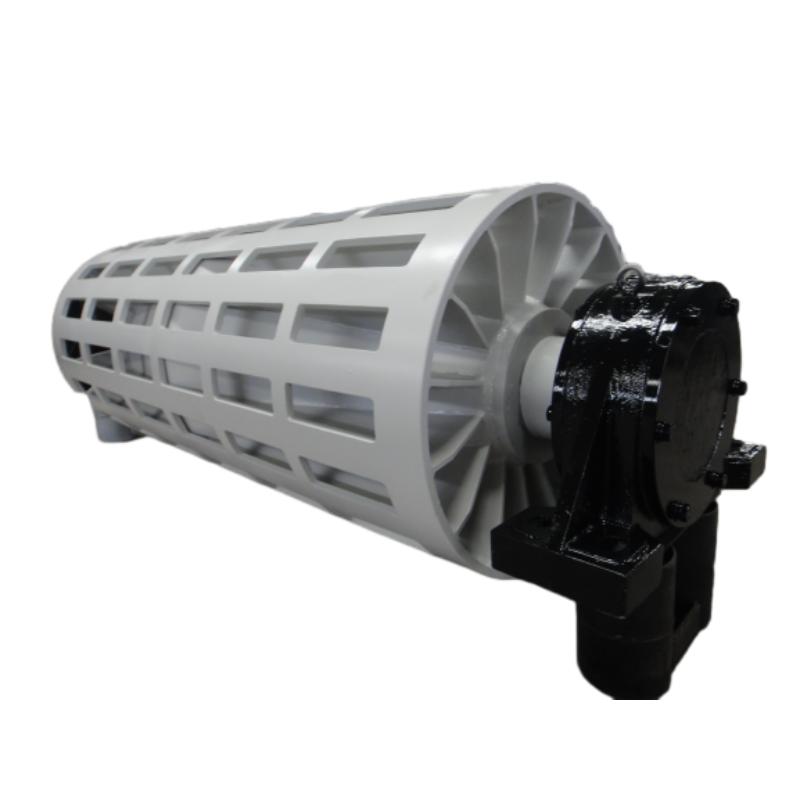Belt Conveyor Pulley – Durable, Custom, High-Traction Design
Slagging Pulley (Heavy Duty): the self-cleaning workhorse behind every reliable conveyor
If you work around a Belt Conveyor Pulley, you already know: uptime is everything. The heavy-duty Slagging Pulley—built in East Outer Ring Road, Yanshan County, Cangzhou, Hebei—keeps the return belt clean by shedding stuck material before it snowballs into mistracking, spillage, or a very expensive shutdown. I’ve seen operations where this one component quietly pays for itself in a month. Not glamorous, but essential.

What it is, and why plants are switching
The Slagging Pulley (some call it a “self-cleaning wing pulley”) uses welded steel ribs to flick off carryback from the belt’s non-working surface. It’s designed for wide belts, heavy loads, and large throughput. Recently, I’ve noticed a trend: mines, steel mills, and cement lines are replacing standard return pulleys with ribbed, heavy-gauge constructions that meet CEMA and ISO balance specs. The reason is obvious—less material packing, less belt damage, fewer shutdowns.
Key specs (real-world values)
| Model | Slagging Pulley (Heavy Duty) |
| Diameter range | ≈ 400–1250 mm (custom) |
| Face width | ≈ 650–2200 mm |
| Shell & ribs | Welded steel plate, Q235B/A36; optional A572 |
| Shaft | 45# steel or 42CrMo (load-dependent) |
| Bearings | Spherical roller 222xx series (SKF/NSK equivalent) |
| Balance grade | ISO 1940-1 G6.3 (typical) |
| Runout | ≤ 0.30 mm TIR (real-world may vary) |
| Finish | Sa 2.5 blast; C3–C4 paint, 80–120 μm DFT |
| Service life | ≈ 30,000–60,000 h with proper alignment & loads |
| Standards | ANSI/CEMA B105.1, ISO 1940-1, ISO 9001 |

How it’s made (quick process flow)
- Materials: certified Q235B/A36 plate, 45# shafts, tested per ASTM A36/A572 chemistry.
- Forming & welding: plate rolling, rib profiling, submerged-arc welds; WPQR held on file.
- NDT: UT on shell seams and MT on critical rib-to-hub junctions; ISO 9712-qualified operators.
- Machining: bearing seats and keyways to ISO 2768-mK; concentricity verified.
- Dynamic balancing: ISO 1940-1 G6.3; sample record G=5.8 on Ø800 mm unit.
- Coating: Sa 2.5 blast; C3/C4 paint stack per ISO 12944 for quarry and plant duty.
- Testing: runout (TIR), hardness check (HB), and idling noise; trial spin to 1.2× rated RPM.
Where it fits
Typical spots: tail or return stations below the belt’s non-working side. Industries? Mining, steel (BOF and sinter lines), cement/raw mills, power plant coal handling, ports. Many customers say they see cleaner return strands within days—less scraper load, less housekeeping. Honestly, that’s the kind of quick win maintenance teams love.

Vendor snapshot (what to watch for)
| Criteria | RaoHua Slagging Pulley | Generic Import | Regional Fabricator |
|---|---|---|---|
| Balance grade | ISO G6.3 (typ.) | G16 (≈) | G6.3–G10 |
| Weld method | Submerged arc + MT/UT | MIG, visual only | MIG/SAW (varies) |
| Material traceability | Heat certs kept | Partial | On request |
| Lead time | ≈ 2–4 weeks | ≈ 6–8 weeks | 3–5 weeks |
| Warranty | 18 months | 12 months | 12–18 months |
| Certifications | ISO 9001, CE | — | ISO 9001 |
Customization and options
- Rib geometry for fine, sticky, or lumpy materials.
- Shaft sizing for high starting torque; keyed or Taper-Lock hubs.
- Coatings: C3/C4 paint; hot-dip galvanizing on request.
- Rubber/ceramic lagging on center discs (some sites prefer hybrid designs).
Field data and feedback
In one northern China steel plant, a 1000 mm wide line saw return-side carryback reduced by ≈38% after replacing a plain return pulley with this Belt Conveyor Pulley. TIR logged at 0.18 mm on-site; vibration dropped by 22% at 1× RPM. A quarry customer told me, “It just stopped the Saturday shovel-out.” Not scientific, but telling.
Why it matters
Cleaner belts protect scrapers, idlers, and splices. Less spillage means safer walkways, lower labor, and fewer citations. And to be honest, when a Belt Conveyor Pulley runs true and balanced, the whole system sounds… calmer. You can hear reliability.
References
- ANSI/CEMA B105.1 – Welded Steel Conveyor Pulleys, Conveyor Equipment Manufacturers Association.
- ISO 1940-1: Mechanical vibration — Balance quality requirements for rotors in a constant (rigid) state.
- ISO 9001:2015 – Quality management systems — Requirements.
- ASTM A36/A572 – Standard Specifications for Carbon and High-Strength Low-Alloy Steel Plates.
-
Impact Roller for Belt Conveyor – Durable Solutions for IndustryNewsNov.24,2025
-
Rubber Conveyor Rollers – Quiet, Durable, Sealed BearingsNewsNov.24,2025
-
Industrial Conveyor Belt Rollers: Durable Solutions for Harsh EnvironmentsNewsNov.24,2025
-
Idler Rollers for Belt Conveyors | Durable, Low-Noise OEMNewsNov.24,2025
-
Durable Rubber Conveyor Belt Rollers for Industrial UseNewsNov.24,2025
-
Ceramic Lagging Conveyor Pulley – Anti-Slip, Wear-ResistantNewsNov.17,2025






























